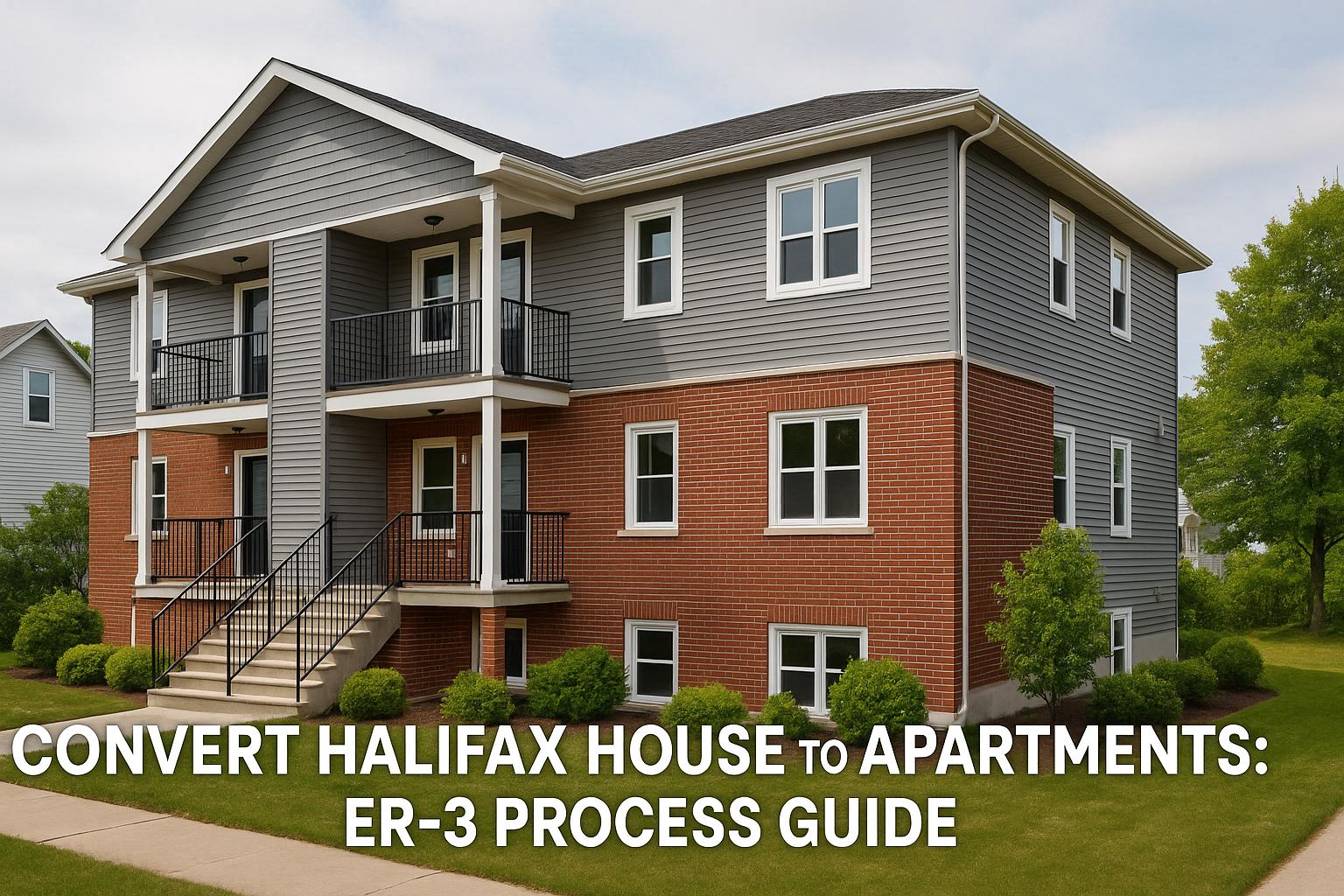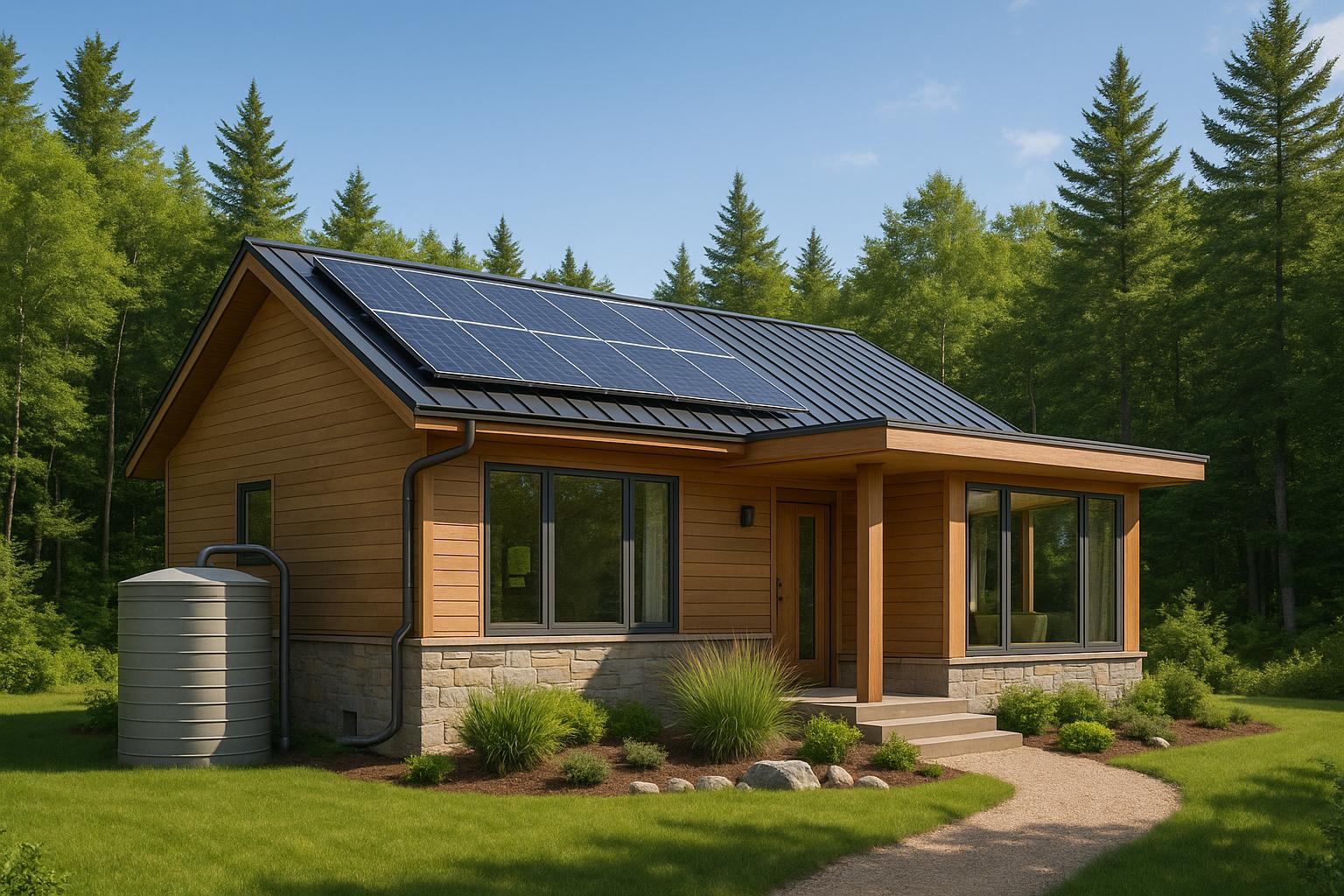If you're planning a 4–6 storey rental building in Halifax, deciding whether to include elevators is a key consideration. While elevators aren't always legally required for buildings of this height, they can influence tenant satisfaction, rental income, and long-term property value. Here's what you need to know:
- Legal Requirements: Elevators may be mandatory depending on the building's height, layout, and accessibility rules. As of April 2025, stricter accessibility standards in Nova Scotia may limit exemptions.
- Tenant Expectations: Seniors, families, and individuals with mobility challenges often prioritize elevator access. This can make your property more appealing and justify higher rents.
- Costs: Installing elevators increases construction and maintenance expenses. However, it may also boost rental income and tenant retention.
- Construction Challenges: Elevator projects require careful coordination to avoid delays and cost overruns. Integrated design-build approaches can streamline the process.
Ultimately, the decision depends on your target tenants, budget, and the building's design. Balancing upfront costs with potential long-term benefits is crucial for making the right choice.
Elevator Machine Room Requirements in 5 minutes or less!
Halifax Building Code and Accessibility Requirements
The Nova Scotia Building Code outlines specific safety and accessibility measures for residential elevators, which play a crucial role in planning and construction projects. Let’s dive into when elevator installation becomes a legal requirement.
When Elevators Are Required by Law
Several factors determine when an elevator is legally required, such as building height, the number of dwelling units, and how residential and non-residential spaces are distributed. For instance, in mixed-use buildings where commercial spaces occupy the lower levels, only the residential floors are typically considered when assessing elevator needs. In other cases, the Code may require elevators based on the vertical height of dwelling floors, even if the total number of storeys is relatively low. Always consult local regulations to confirm these requirements.
Accessibility Standards You Must Meet
Meeting accessibility standards goes beyond simply installing an elevator. Systems must include adequate space, user-friendly controls, and interfaces that ensure safe and easy access for all residents. Moreover, hallways and shared areas must also be designed to accommodate everyone, creating an inclusive and secure environment throughout the building.
Exceptions and Alternative Options
Certain buildings may qualify for exemptions or alternative compliance methods, but these are generally limited in scope. For example, smaller residential properties or those with unique layouts might not need to meet the standard requirements. However, these exceptions are rare and should always be verified with written approval from local authorities before proceeding with alternative solutions.
Elevator Costs and Financial Impact
When considering elevator expenses, it’s essential to look beyond the upfront equipment costs. Property owners need to account for a range of factors that can influence both project budgets and long-term profitability.
Installation and Operating Costs
The cost of installing an elevator depends on several factors, including the type of system (hydraulic or traction), the building’s design, and the choice of finishing materials. Installation isn’t a simple process - it involves collaboration with structural, electrical, and elevator specialists to ensure the shaft meets precise specifications.
Once installed, elevators come with ongoing costs. These include regular maintenance, certified inspections, and energy consumption. Additionally, having an elevator may affect insurance premiums, as it could require additional liability coverage or raise the building’s replacement value.
How Elevators Affect Rental Income
Beyond the costs, elevators can significantly impact rental income. By increasing accessibility, they make a property more appealing to tenants such as individuals with mobility challenges, families with young children, or older adults. This added convenience often justifies higher rents and can improve tenant retention, reducing turnover-related expenses.
However, property owners must carefully weigh these revenue benefits against the associated costs. Creating detailed financial projections tailored to the local market is crucial to determine if the long-term income boost offsets the initial and ongoing investment. Additionally, since installing an elevator raises the overall project cost, it may also affect construction financing and debt planning.
sbb-itb-16b8a48
What Halifax Tenants Expect
Tenant expectations play a big role in determining property value and rental income, tying back to the cost-benefit analysis we touched on earlier. Knowing which groups of tenants place a high priority on elevator access can help shape your building design choices.
Which Tenants Want Elevators Most
Seniors and elderly tenants often see elevators as non-negotiable. Mobility challenges make elevators essential for maintaining their independence. As Shannon Tasker, a commenter on the Local Governance Talks 2.0 Facebook group, pointed out, "An elevator is an important key feature for anyone who is elderly or disabled... even in mid-rise buildings... can a power wheelchair fit into the elevator or not is important... as any senior who has experienced an elevator outage understands" [2].
Those with mobility challenges rely on elevators for navigating multi-level buildings. For individuals using wheelchairs or other mobility aids, elevators provide safe and independent access to upper floors [1][2].
Families also find elevators valuable, especially for transporting strollers, groceries, and other everyday items with ease [1].
Taking these tenant preferences into account can guide construction decisions, ensuring a well-organized and thoughtful project approach.
Construction Approaches for Elevator Projects
Installing elevators in mid-rise buildings is no small feat - it requires careful planning and coordination. A design-build approach, where all parties work together, can save both time and money compared to fragmented methods.
Fragmented vs. Integrated Construction Methods
In fragmented construction, different contractors handle separate parts of the elevator installation. This often leads to coordination problems and mismatched specs, which can cause budget overruns ranging from 30% to 60%.
On the other hand, an integrated design-build method brings everyone - planners, architects, engineers, and construction crews - under one roof. This unified approach ensures smoother communication and tailored solutions for elevator design and installation. It involves a thorough evaluation of the site, factoring in space, electrical requirements, and accessibility to meet local building codes [3]. Property owners also benefit from fixed-price agreements, reducing the risk of surprise costs and keeping the process efficient.
Avoiding Delays with Systematic Project Management
Time is another critical factor. Elevator installations require precise coordination across multiple trades. When independent contractors manage their own schedules, it often leads to misaligned timelines and delays. A systematic project management approach solves this by using advanced scheduling tools to keep tasks in sync. For example, steps like electrical rough-ins and equipment installation are carefully sequenced to avoid disruptions. With one entity overseeing the project, everything from local code compliance to regulatory approvals becomes more straightforward. This method can significantly cut down construction time, often completing projects in as little as six months - much faster than the timelines typically seen with fragmented methods [3].
Making the Right Decision for Your Project
When choosing an elevator for your project, it’s all about finding the right balance between legal compliance, costs, and tenant expectations. Nova Scotia’s updated building code regulations, effective April 1, 2025, have introduced stricter accessibility standards by removing certain exceptions for apartment buildings [4].
These updates align the Nova Scotia Building Code with the National Building Code of Canada 2020, incorporating specific changes to accessibility requirements [4]. In some situations, design tweaks or alternative safety measures could offer a more affordable way to meet these standards without compromising compliance.
Once you’ve clarified the legal obligations, it’s time to crunch the numbers. Look beyond the initial installation costs and consider ongoing expenses like maintenance and fees. Weigh these against potential benefits, such as higher rental income and reduced vacancy rates. For properties targeting seniors or individuals with mobility challenges, an elevator can justify its cost by attracting tenants willing to pay higher rents and stay longer.
Understanding your market is key. While young professionals may not prioritize an elevator in a four-storey building, families and seniors often see it as a must-have feature.
Your construction approach matters too. Opting for an integrated design-build strategy can help lock in costs and prevent delays. This is crucial, as project setbacks could result in rental revenue losses of up to $8,800 per month.
Ultimately, your decision should align with your project’s goals and the needs of your tenants. For high-end developments, an elevator can enhance occupancy rates, while for budget-focused projects, those funds might be better spent elsewhere.
FAQs
What are the upcoming accessibility standards in Nova Scotia that will impact elevator requirements in 2025?
Starting in 2025, Nova Scotia will implement new rules under the Built Environment Accessibility Standard Regulations, focusing on elevators in multi-storey buildings. These elevators must be easy to use, have slip-resistant surfaces, and feature controls arranged in a square grid layout for better usability. These changes are part of the Nova Scotia Building Code Act and are designed to improve safety and accessibility for everyone.
If you're working on a mid-rise building project, it's crucial to include these standards in your plans from the start. Doing so not only ensures compliance but also helps you avoid expensive modifications down the road while meeting the needs of future tenants.
Will adding an elevator to a 4–6 storey building improve tenant satisfaction and rental income?
Adding an elevator to a 4–6 storey building can make a big difference in tenant satisfaction. It improves accessibility and convenience, which is especially important for seniors, families with small children, and people with mobility challenges. These upgrades can lead to better tenant retention and make your property appealing to a wider range of renters.
Beyond tenant comfort, elevators can boost the building's overall value and market appeal. In Halifax's competitive rental market, features like elevators can help your property stand out, allowing you to potentially charge higher rents. While installing an elevator does come with upfront costs, the long-term benefits, including improved ROI, often make it a worthwhile investment.
What are the advantages of using a design-build approach for installing elevators in 4–6 storey buildings?
Using a design-build method for elevator installation in 4–6 storey buildings comes with several clear benefits. By combining the design and construction phases, this approach simplifies the process, leading to quicker project timelines and fewer unexpected delays. Early collaboration ensures the elevator system is smoothly integrated into the building's overall design, cutting down on the chances of expensive rework.
Another advantage is that this method supports compliance with local building codes and accessibility requirements - an essential factor in Halifax's competitive rental market. With a single team handling both planning and execution, you gain better control over costs, enhanced safety measures, and a construction process tailored specifically to your project's needs.



